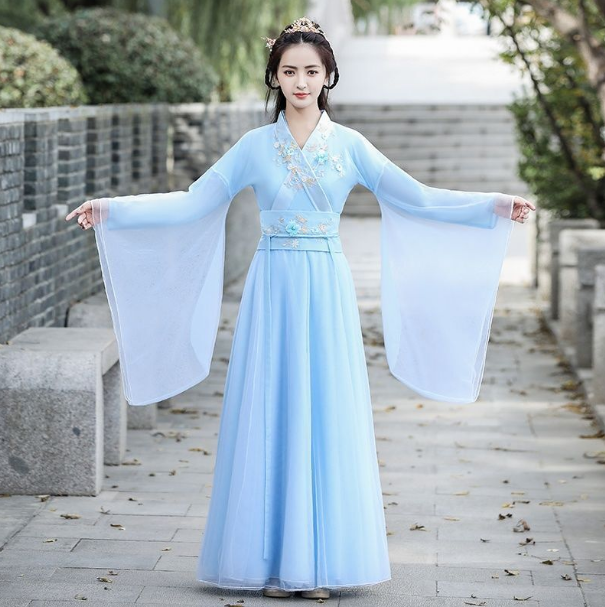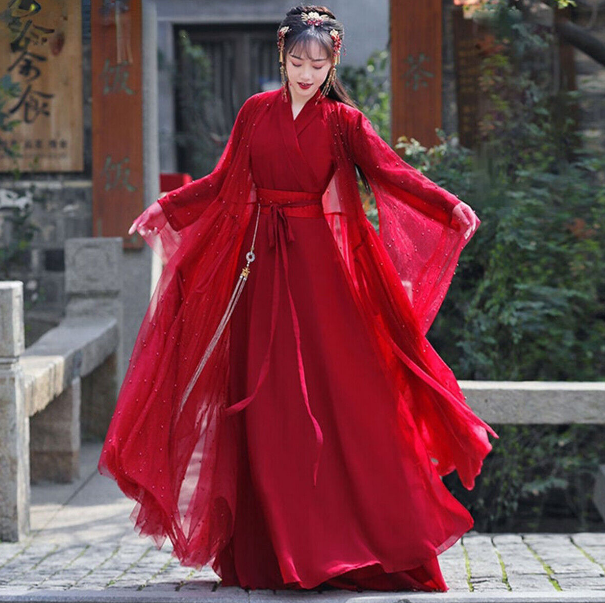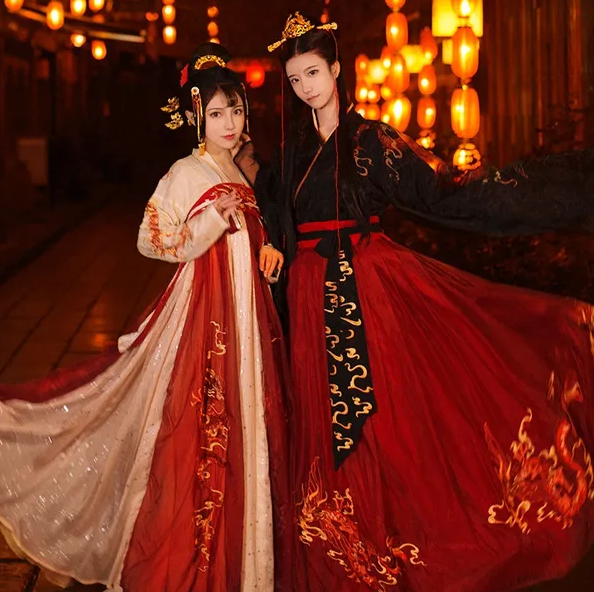Introduction to Chinese Princess Attire
Chinese princess attire, a manifestation of culture and heritage, has a rich history steeped in tradition and symbolism. It serves as a reflection of societal values and aesthetics, encompassing a wide array of garments and accessories.
The Significance of Princess Attire
Princess attire in China holds immense significance, transcending mere fashion. It represents not only the wearer’s status but also her connection to tradition and her role in society. These garments are laden with cultural symbolism, expressing virtues, and embodying the spirit of Chinese princesses throughout history.

Historical Evolution of Princess Clothing
The evolution of Chinese princess attire traces back centuries, mirroring the dynastic shifts and cultural changes that China has undergone. From the elaborate and intricate Hanfu of ancient times to the more streamlined and elegant styles of later dynasties, the historical journey of princess clothing reflects the dynamic nature of Chinese fashion and culture.
Traditional Chinese Princess Garments
The attire of Chinese princesses is an exquisite blend of tradition, artistry, and cultural symbolism. These garments encompass a wide range of styles, each with its unique characteristics and significance.
Hanfu: The Classic Princess Attire
Hanfu, with its graceful and flowing lines, is a quintessential choice for Chinese princesses. It consists of multiple layers, including an outer robe and an inner garment. The use of silk, a luxurious yet breathable material, enhances its elegance. Hanfu embodies cultural values, with colors, patterns, and accessories carefully chosen to convey virtues and social status. The intricate embroidery and elaborate sleeves are characteristic features, creating an aura of timeless beauty.
Accessories and Hairstyles
Accessories play a pivotal role in completing the ensemble of a Chinese princess. Delicate hairpins, adorned with pearls and precious stones, secure intricate hairstyles that vary depending on the dynasty and occasion. Headdresses, often adorned with flowers and auspicious symbols, add to the regal appearance. Jewelry, such as jade and gold ornaments, accentuates the attire’s splendor. These accessories are not mere adornments but carry cultural and symbolic significance, underscoring the princess’s role and identity.
Colors and Symbolism in Princess Attire
Chinese princess attire carefully selects colors to convey profound cultural and symbolic meanings. These vibrant hues enrich the narrative woven into each garment, contributing to their significance.
Meaning of Colors in Princess Dresses
- Red: Princess dresses feature vibrant red hues symbolizing happiness, joy, and good fortune. This color commonly graces wedding and ceremonial attire, infusing these occasions with positivity.
- Yellow: Reserved for royalty and the emperor, yellow exudes power, prestige, and sovereignty. Exclusive to select elite, this color reflects their exalted status.
- Blue: A symbol of immortality and nobility, blue imparts a sense of calm and harmony, often donned during peaceful and ceremonial moments.
- Green: Representing new beginnings, growth, and youth, green embodies vitality and fertility, making it ideal for young princesses.
- Black: Princesses choose black for its stability, seriousness, and sophistication. It adds a formal and somber touch to important events.
- White: White signifies purity but is primarily reserved for mourning attire, steering clear of festive contexts.
Symbolic Accessories and Their Significance
- Hairpins: Exquisite hairpins boast symbols like phoenixes and dragons, each bearing unique significance. Phoenixes symbolize beauty and grace, while dragons signify power and strength.
- Headdresses: Adorned with auspicious symbols like butterflies, peonies, and lotus flowers, headdresses bring blessings and good luck to wearers.
- Jewelry: Jade and gold jewelry, prevalent in princess attire, hold protective qualities and represent wealth and prosperity.
- Belts and Sashes: Beyond functionality, belts and sashes carry symbols of longevity, happiness, and good fortune.
These thoughtfully selected colors and accessories not only enhance the aesthetic allure of princess attire but also articulate a rich cultural narrative, resonating with beliefs and values. Further exploration of colors and symbolism in Chinese clothing can be found in the Wikipedia page on Hanfu and Chinese clothing.
Modern Adaptations of Princess Clothing
Princess clothing, once confined to history and tradition, has found a vibrant resurgence in modern times. Contemporary China embraces these adaptations with creativity and innovation, breathing new life into this cherished attire.
Princess Fashion in Contemporary China
- Integration of Traditional Elements: Contemporary princess fashion seamlessly blends traditional elements with modern aesthetics. Designers draw inspiration from historical styles, reinterpreting them in a fresh and fashionable manner.
- Materials and Fabrics: Modern princess clothing incorporates a variety of materials, from silk to more sustainable options. This diversification enhances comfort and sustainability while preserving the elegance of the attire.
- Versatility and Practicality: While retaining their regal charm, modern princess dresses are designed for versatility. They are not limited to formal occasions but can also be worn casually, making them more accessible to a wider audience.
- Influence of Celebrity and Media: Influential figures and media play a significant role in popularizing modern princess fashion. Celebrities often don princess-inspired outfits at events, further propelling the trend.
Influence on Global Fashion Trends
- International Runways: Chinese princess fashion has begun to grace international runways, garnering attention from fashion capitals like Paris and Milan. This global exposure showcases its adaptability and appeal.
- Fashion Collaborations: Collaborations between Chinese and international designers have resulted in fusion collections that incorporate elements of princess attire into contemporary fashion lines.
- Red Carpet Glamour: At international award ceremonies and red carpet events, celebrities from various cultures have embraced the elegance of princess-inspired gowns, contributing to its global influence.
- Social Media and Influencers: Social media platforms and fashion influencers have played a pivotal role in popularizing princess fashion worldwide, fostering a global community of enthusiasts.
These adaptations breathe new vitality into Chinese princess attire, ensuring its enduring relevance in the world of fashion. For further exploration of modern adaptations and their impact, refer to the Wikipedia page on Chinese fashion.

Royal Occasions and Ceremonies
Princess attire takes center stage during royal occasions and ceremonies, symbolizing tradition and regality in grand celebrations.
Princess Attire for Royal Weddings
- Wedding Gowns Fit for Royalty: Royal weddings demand the most exquisite gowns, often custom-designed for the princess. These dresses are adorned with intricate lace, pearls, and crystals, creating a breathtaking bridal ensemble.
- Historical Allusions: Many royal brides draw inspiration from historical princesses, infusing their wedding attire with subtle references to past dynasties. This fusion of tradition and personal style adds depth to the ensemble.
- Symbolic Colors: The choice of color for a princess’s wedding gown holds great significance. While red symbolizes joy and luck, white conveys purity. Princesses often opt for a combination, representing both tradition and modernity.
- Accessories and Tiaras: Elaborate tiaras, often family heirlooms, are a staple for royal brides. These heirlooms, encrusted with precious gems, showcase a connection to the monarchy’s history.
Traditional Ceremonial Dresses for Princesses
- Coronation Attire: Princesses don distinctive coronation robes and regalia when ascending to the throne. These robes bear the imperial dragon and phoenix motifs, signifying their authority and auspicious beginnings.
- Palace Banquets: Formal banquets and state dinners call for sumptuous ceremonial dresses adorned with intricate embroidery and elegant patterns. These dresses reflect the grandeur of the occasion.
- Festive Celebrations: On special occasions like New Year’s or traditional festivals, princesses don attire rich in cultural symbolism. These dresses often feature vibrant colors and ornate accessories, symbolizing prosperity and happiness.
- Investiture Ceremonies: When presenting honors or titles, princesses wear attire denoting their rank and status. These ceremonial dresses may include sashes, medallions, and headdresses, all designed to convey their authority.
These royal occasions and ceremonies provide a platform for showcasing the rich cultural heritage embodied in princess attire, a harmonious blend of tradition and contemporary elegance. To delve deeper into the world of royal fashion, explore the Wikipedia page on Royal Dress Codes.
Princesses in Popular Media and Culture
Chinese princesses hold a special place in popular media and culture, captivating audiences with their grace, beauty, and rich historical narratives.

Portrayal of Chinese Princesses in Films and TV
- Historical Epics: Chinese historical dramas often feature princesses as central characters. These epic productions meticulously recreate royal courts, attire, and ceremonies, offering viewers an immersive glimpse into the past.
- Character Development: Princess characters in films and TV series are portrayed with depth and complexity. Their struggles, aspirations, and growth resonate with audiences, transcending mere archetypes.
- Intricate Costumes: Costume designers spare no expense in crafting authentic princess attire. Each dress is a masterpiece, reflecting the fashion of the era and the character’s status and personality.
- Historical Accuracy: Filmmakers and producers invest in extensive research to ensure historical accuracy. Set designs, props, and dialogue are carefully curated to transport viewers to ancient China.
Princess Attire as a Cultural Symbol
- National Pride: Princess attire embodies China’s rich cultural heritage, fostering national pride and appreciation for traditional values.
- Cultural Diplomacy: Princess fashion serves as a form of cultural diplomacy, allowing China to showcase its heritage to the world. Chinese princess-inspired clothing is embraced internationally.
- Fashion Trends: Princess attire continues to influence global fashion trends. Designers worldwide draw inspiration from traditional Chinese garments, infusing them into contemporary collections.
- Symbol of Elegance: Beyond historical contexts, princess attire symbolizes elegance, grace, and timeless beauty, making it a choice for formal occasions and weddings worldwide.
The portrayal of Chinese princesses in popular media and their enduring cultural significance highlight the lasting appeal of these iconic figures. To explore further, visit the Wikipedia page on Chinese Historical Drama and Chinese Cultural Diplomacy.